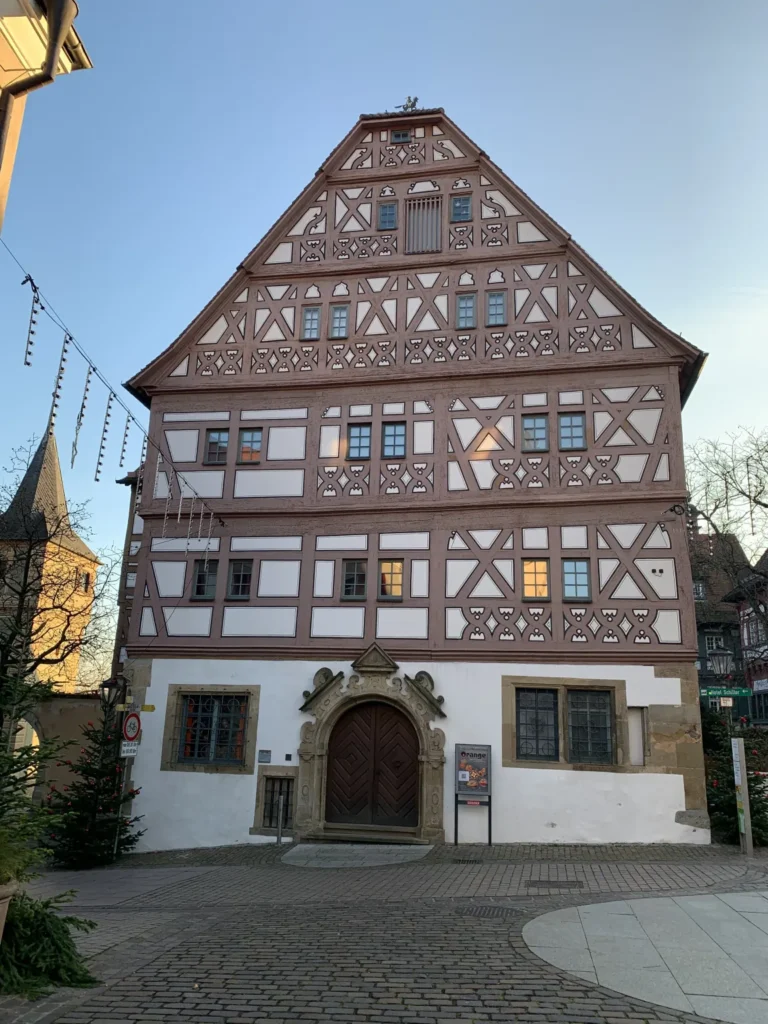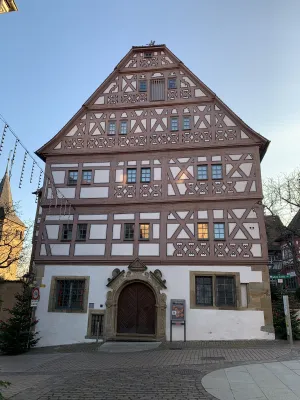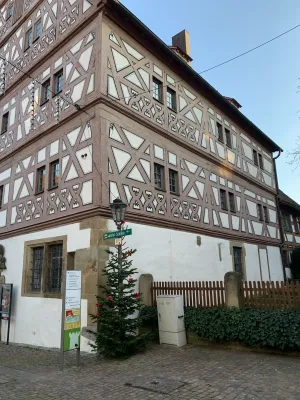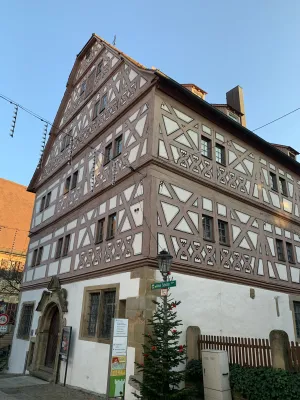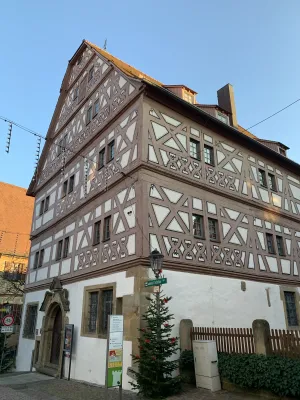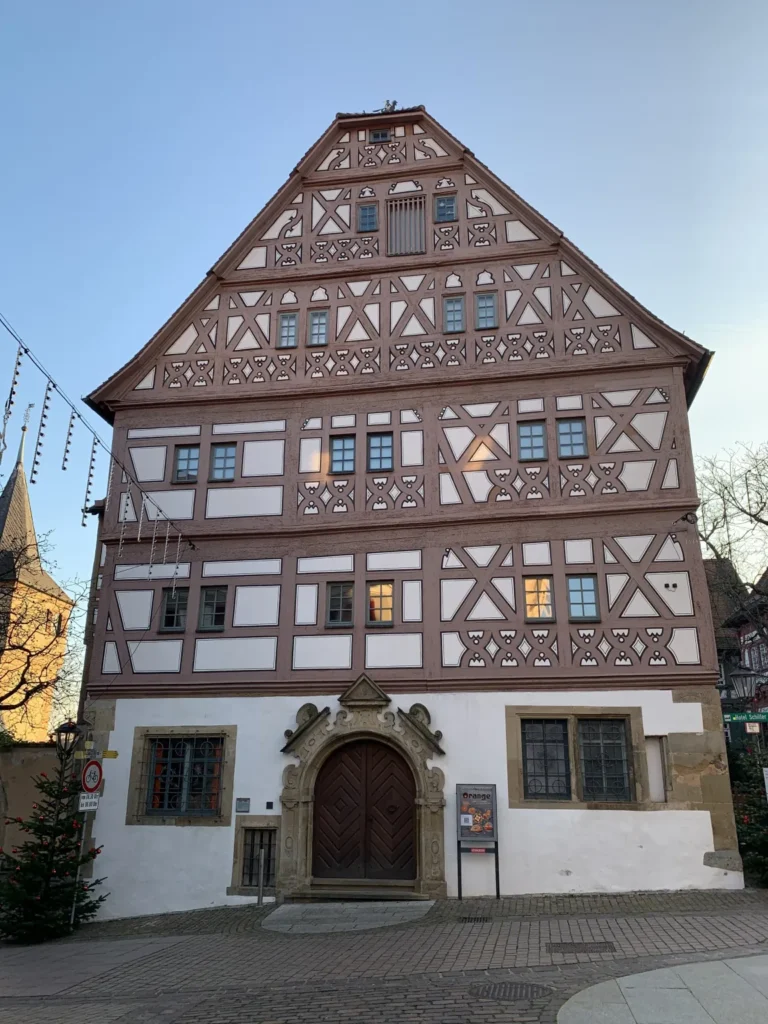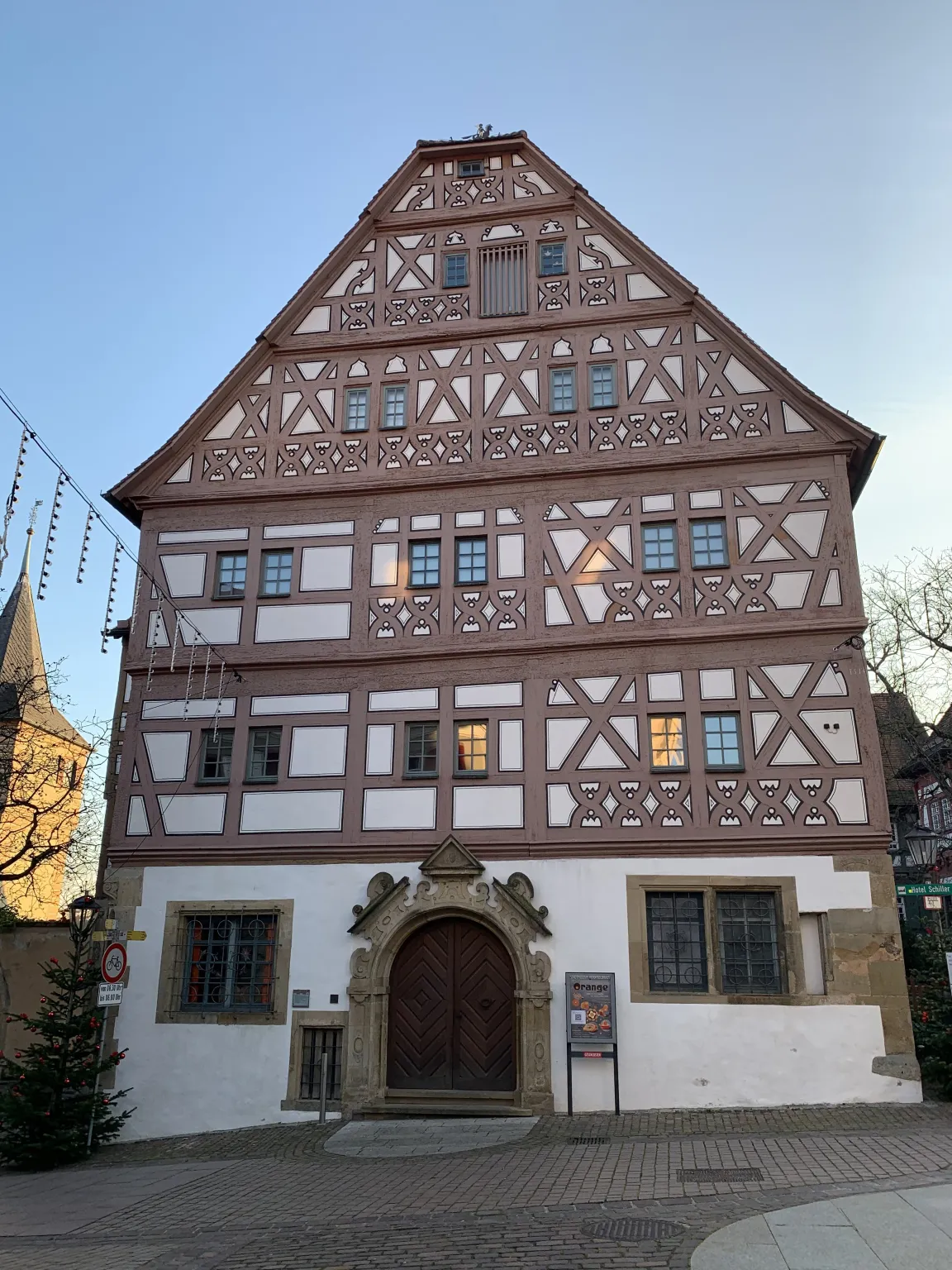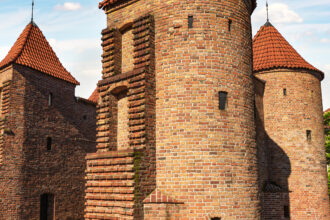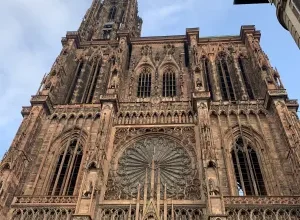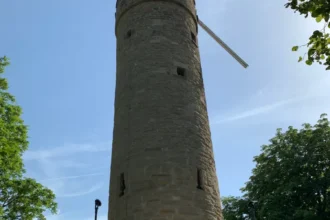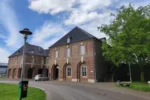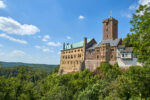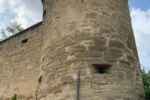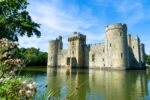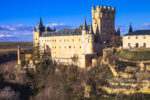The Hornmold House, located in Bietigheim’s historic old town, is one of the most beautiful Renaissance town houses in southern Germany and was actually almost demolished. The story begins when Sebastian Hornmold, bailiff and first church council director in Württemberg, built his residence and official seat there in place of a benefice house on the Johannespfründe. The remains of the Johannespfründe house, which Duke Ulrich confiscated when the Reformation was introduced in the Duchy of Württemberg and gave to Sebastian Hornmold as a token of gratitude for his services, can still be seen today in the late Gothic remains on the northwestern ground floor. The beautiful house with its early modern half-timbered façade decorated with curved St. Andrew’s crosses served Sebastian Hornmold, his wife Anna, and their six children as a residence and business premises for many years. The summer room with its figurative murals and confessional satires served as a room for leisure. The cellar was used as a wine store. This was because the wine trade provided a lucrative additional income. After the family moved away from Bietigheim, the house continued to be used as a residence. Despite modernization in 1626, it fell into disrepair and was eventually slated for demolition. Thanks to the courageous efforts of a group of Bietigheim citizens in the 1970s, this fate was averted. After extensive renovation from 1976 to 1986, it has housed the city museum since 1989, where the history of the city and its surroundings from the Neolithic Age to the 20th century is brought to life for everyone on around 400 square meters. In addition, since 2017, the Hornmoldhaus Friends Association has been committed to preserving and promoting the future of this valuable cultural asset with its beautiful decorations and paintings inside the house and its magnificent half-timbered structure. The Hornmoldhaus, which can be visited free of charge, offers a permanent exhibition on the history of the city, as well as annually changing special exhibitions and active cultural education.
